
Wine Culture and Information since 2002 - Volume 22
 Wine Culture and Information since 2002 - Volume 22 |
|
Comparing SagrantinoConsidered the most representative grape of Umbria, Sagrantino makes great wines, of great character and personality, with rich and complex aromas |
|
In the last years Umbrian enology is mainly famous for one of its autochthonous grapes, precisely, a red berried grape, which is getting more and more successful in Italy and in the rest of the world. Sagrantino, today being one of the most famous sons of the green heart of Italy, is capable of making powerful and robust wines, with rich aromas that the patience of time will make complex, a success that in few years allowed it to reach the top of Italian enology. A singular case, if we consider this grape was about to disappear from the hills of Montefalco and to leave its place to other varieties, capable of ensuring higher yields and, in particular, a better commercial consensus. With its high contents in polyphenols - in this sense, Sagrantino is one of the most rich grapes known - it seemed quite an enterprise to create an “elegant” wine because of its astringency. For centuries, Sagrantino was used for the traditional wine of Montefalco, a sweet and robust wine which could well matched with the rich meat roasts and pecorino cheese, a tradition which is still today alive in these places. Few people would have believed from that grape one day would have been possible to make a dry wine, rich and powerful, which could compete, and frequently win, the challenge with other famous wines. The history of Sagrantino, in its “dry” style, it pretty recent - a little more than 30 years - and it took all the obstinacy and tenacity typical of the people living in Umbria, as well as the firm conviction of some producers who have always believed in their grape. Whether a time the most frequent association with Sagrantino was a sweet and robust wine, today it is its “recent” dry style to be associated the most - always imposing and robust - as to cast a shadow over the other excellent sweet style. Thirty years of successes, from unknown grape to famous and celebrated grape all over the world: a good revenge for a grape which was destined to disappear from the vineyards of Montefalco and no one wanted to cultivate it anymore.
|
|
Sagrantino is a red berried grape from Montefalco and its spreading is practically limited to part of Umbria only. Characterized by intense and pleasing aromas of blackberry, wines produced with Sagrantino grape can also be recognized for their full body and their evident astringency, a characteristic which frequently and negatively affects balance in case it is not properly “tamed”. For this reason, the vinification of Sagrantino di Montefalco provides for an aging period of at least 30 months, of which at least 12 in cask, sometimes replaced by barrique. The aromas which can be found in Sagrantino are usually exuberant and intense, first of all the one of blackberry - the most frequent and identifying aroma - as well as aromas of black cherry, plum and violet, including tertiary aromas developed during aging that with time will get an interesting complex character.
The purpose of our comparative tasting is to understand the organoleptic qualities of Sagrantino through the expression of three important producers of Montefalco: Arnaldo Caprai, Adanti and Antonelli. By comparing the three wines, we will understand the main organoleptic qualities of Sagrantino, despite the three wines are different one from each other in their “interpretation”. We will also understand the influence of wood in Sagrantino, as the three producers use different types of casks: Arnaldo Caprai's Sagrantino di Montefalco Collepiano is aged for 22 months in barrique, Adanti's Sagrantino for 26 months in cask, whereas Antonelli's Sagrantino ages for 15 months in cask. For our comparative tasting we will use in all the three cases the wines of the most recent commercialized vintage by the respective producers. The three wines will be served at a temperature of 18° C (65° F), in order to exalt the aromatic profile and to make astringency less aggressive. As usual, the tasting will be done by using three ISO glasses.
|
||||||||
|
Sagrantino is a particularly rich grape in coloring substances. This characteristic can be easily detected, in quality wines, by allowing a light source to pass through the glass while in the opposite side will be put an object - a pencil or simply a finger - in order to evaluate the low transparency. Transparency, as it usually happens in every wine, will increase with time, however it will be strongly affected by the quality of grapes used for the production of the wine. The color typically observed in Sagrantino is intense ruby red, frequently deep and dark as well, with nuances of the same color, frequently garnet red. Thanks to the high quantity of polyphenols, a quality requiring a proper alcohol by volume in order to ensure balance to the wine, Sagrantino can be aged in bottle for many years, a period during which, the color will change. With time, wines produced with Sagrantino will get bright garnet red hues and nuances of the same color or brick red. We will begin the evaluation of appearance from Antonelli's Sagrantino di Montefalco. By holding the glass tilted on a white surface - such as a towel or a sheet of paper - we will observe at the base of the glass the hue of color. It will be observed an intense ruby red color, with low transparency, whereas the nuances, observed at the edge of the liquid mass towards the opening of the glass, will be characterized by a garnet red color. The evaluation of the second wine's appearance, Adanti's Sagrantino di Montefalco, will reveal pretty similar color than the previous wine: intense ruby red and nuances of garnet red, also in this case, with a pretty low transparency. We will now pass to the evaluation of the third wine, Arnaldo Caprai's Sagrantino di Montefalco Collepiano. The color of this last wine, just like the previous ones, will be characterized by intense ruby red and nuances will be, once again, garnet red. Also in this case transparency will be pretty low, another confirmation about the high contents of coloring substances in Sagrantino.
|
|
The aromatic profile of Sagrantino is extremely interesting, both during the first years of aging, as well as after years of aging in bottle. The first aromatic qualities which can be recognized in Sagrantino are the ones of fruits, in particular blackberry, the most typical and identifying aroma in wines produced with this grape. Among the other typical fruit aromas of Sagrantino are also found plum, black cherry and blueberry, whereas the most typical flower aroma is violet. According to the production disciplinary, Sagrantino di Montefalco must be aged for at least 30 months, of which at least 12 months in cask, therefore the aromatic qualities of these wines will also be characterized by tertiary aromas. Besides vanilla, which is the most typical aroma in wines aged in wood - and in particular in barrique - in Sagrantino can also be perceived aromas of licorice, tobacco, chocolate, clover, cinnamon, leather, coffee and cocoa. Also balsamic aromas are frequent in Sagrantino and the most typical of them is menthol, rarely eucalyptus. The olfactory analysis of our comparative tasting will begin from Antonelli's Sagrantino di Montefalco. By holding the glass in vertical position and without swirling, we will proceed with the evaluation of opening aromas. The first smell will allow the perception of the aromas of blackberry, plum and black cherry, the most frequent and identifying aromas in Sagrantino, in particular, the one of blackberry. We will now swirl the glass in order to favor a proper oxygenation of the wine as well as favoring the development of all the other aromatic sensations. With the second smell will perceive the aromas of violet - the most typical flower aroma in Sagrantino - blueberry and cyclamen, followed by a series of aromas made of vanilla, tobacco, pink pepper, licorice, cinnamon and mace. It should be noticed the excellent balance of the aromatic components, in particular, the balanced contribution of wood, a characteristic typical in Antonelli's red wines. Let's now pass to the olfactory evaluation of the second wine of our comparative tasting: Adanti's Sagrantino di Montefalco. Opening aromas of this second wine, evaluated by holding the glass in vertical position and without swirling, will be characterized - just like the previous wine - by blackberry, black cherry and plum. After having swirled the glass, we will proceed with the second smell, from which it will be possible to perceive the aromas of violet and blueberry, followed by aromas of vanilla, licorice, cocoa, cinnamon, leather, juniper, pink pepper and tobacco, as well as the refreshing balsamic sensation of menthol. It should be noticed also in this case the balance of wood in the overall aromas of the wine: 26 months in cask, a precise productive choice of Adanti. Also the opening aromas of the third wine, Arnaldo Caprai's Sagrantino di Montefalco Collepiano, will be characterized by blackberry, black cherry and plum, typical in Sagrantino. After having swirled the glass, we will proceed with the second smell from which will be perceived aromas of violet, blueberry, vanilla, chocolate, licorice, tobacco, mace and coffee. It should be noticed the different influence of wood in this wine, balanced with all the other aromas, in this case 22 months in barrique.
|
||||
|
One of the main characteristic perceived during the tasting of Sagrantino is represented by the evident astringency, a quality which usually requires a good skill from producers in order to obtain a correct balance of the wine. The control of astringency in Sagrantino - despite this should be considered an absolutely typical characteristic - begins in the vineyard, by scrupulously checking the ripeness of polyphenols in order to avoid the excessive vehemence of “harsh” tannins in wine. On this regard it is also useful the effect of aging in cask as well as alcohol, which in Sagrantino can also reach 14.5%. Another characteristic of Sagrantino is represented by its robust structure, something which is clearly perceptible during the attack and that continues to be perceived after the wine has been swallowed. It should be remembered Sagrantino is one of the red berried grapes having the highest content in polyphenols. The first wine we will examine in gustatory evaluation is Antonelli's Sagrantino di Montefalco. The attack is characterized both by structure and astringency, however these two characteristics will soon leave the scene to the perception of alcohol and roundness. It should also be noticed the excellent correspondence to the nose: the blackberry is perceptible in the mouth as well. Let's now pass to the second wine of our comparative tasting: Adanti's Sagrantino di Montefalco. Also in this case will be the astringency and structure to be noticed in the attack, therefore leaving the “scene” to the alcohol and roundness, balancing the wine and making it very agreeable. Also in this case the correspondence to the nose is excellent. Let's now pass to the third wine: Arnaldo Caprai's Sagrantino di Montefalco Collepiano. Also this wine confirms the character of Sagrantino: a tannic and robust attack which leaves the “scene” to the perception of alcohol and roundness, making the wine balanced. It should be noticed how the different types of casks and the different aging times affect both roundness and astringency of tannins.
|
|
Our comparative tasting allowed us to understand the main qualities of Sagrantino, the extraordinary red grape of Umbria, more precisely, of Montefalco. The finish of Antonelli's Sagrantino di Montefalco is characterized by an excellent persistence in which can be recognized the flavors of blackberry, black cherry and plum. It should be noticed how the perception of structure is evident during the final phases of the tasting as well. The finish of Adanti's Sagrantino di Montefalco is very persistent, also in this case leaving in the mouth, flavors of blackberry, black cherry and plum, as well as the typical perception of structure. Also the finish of Arnaldo Caprai's Sagrantino di Montefalco Collepiano is very persistent with long flavors of blackberry, black cherry and plum, also leaving in the mouth the sensation of a full body. Despite our comparative tasting has considered the “dry” style only, it should be remembered with Sagrantino is also produced an interesting sweet wine, and thanks to the contrast between sweetness and astringency, it surprises many wine lovers.
|
Wines of the Month |
|
|
|
Score legend Prices are to be considered as indicative. Prices may vary according to the country or the shop where wines are bought |
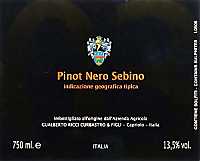
|
|
Pinot Nero 2000 |
|
| Ricci Curbastro (Lombardy, Italy) | |
| Grapes: Pinot Noir | |
| Price: € 18.50 | Score: |
| This Pinot Noir shows a brilliant ruby red color and nuances of brick red, moderate transparency. The nose reveals intense, clean, pleasing, refined and elegant aromas that start with hints of cherry, plum and dried rose followed by aromas of strawberry, licorice, vanilla, tar,menthol, blueberry, cocoa, cinnamon, clover, leather and tobacco. The mouth has good correspondence to the nose, a pleasing crisp and slightly tannic attack, however balanced by alcohol, full body, intense flavors, agreeable. The finish is persistent with flavors of cherry, plum and strawberry. A well made wine. This Pinot Noir ages for more than 18 months in barrique. | |
| Food Match: Game, Roasted meat, Braised and stewed meat with mushrooms, Hard cheese | |
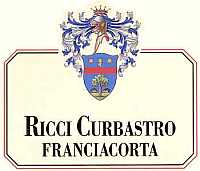
|
|
Franciacorta Extra Brut 2002 |
|
| Ricci Curbastro (Lombardy, Italy) | |
| Grapes: Chardonnay (50%), Pinot Noir (50%) | |
| Price: € 18.00 | Score: |
| This Franciacorta shows a brilliant golden yellow color and nuances of golden yellow, very transparent, fine and persistent perlage. The nose reveals intense, clean, pleasing, refined and elegant aromas that start with hints of hazelnut, grapefruit and bread crust followed by aromas of yeast, acacia, banana, apple, pear, pineapple, hawthorn, butter and plum. The mouth has good correspondence to the nose, an effervescent and crisp attack, however balanced by alcohol, good body, intense flavors, agreeable. The finish is persistent with flavors of grapefruit, banana and hazelnut. A well made wine. This Franciacorta Extra Brut ages in bottle on its lees for at least 42 months. | |
| Food Match: Roasted fish, Roasted white meat, Stuffed pasta, Fried fish, Broiled crustaceans | |
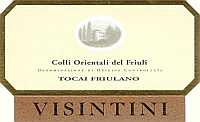
|
|
Colli Orientali del Friuli Tocai Friulano 2005 |
|
| Visintini (Friuli Venezia Giulia, Italy) | |
| Grapes: Tocai Friulano | |
| Price: € 10.00 | Score: |
| This wine shows a intense straw yellow color and nuances of greenish yellow, very transparent. The nose reveals intense clean, pleasing and refined aromas which start with hints of apple, pear and pineapple followed by aromas of almond, hawthorn, broom and plum. The mouth has good correspondence to the nose, a crisp attack and however balanced by alcohol, good body, intense flavors. The finish is persistent with flavors of apple, pear and almond. This Tocai Friulano ages in steel tanks. | |
| Food Match: Pasta and risotto with fish, White roasted meat, Roasted fish | |
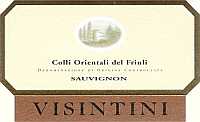
|
|
Colli Orientali del Friuli Sauvignon 2005 |
|
| Visintini (Friuli Venezia Giulia, Italy) | |
| Grapes: Sauvignon Blanc | |
| Price: € 10.00 | Score: |
| The wine shows a brilliant greenish yellow color and nuances of greenish yellow, very transparent. The nose denotes intense, clean, pleasing and refined aromas which start with hints of peach, litchi and pear followed by aromas of nettle, pineapple, elder and broom. The mouth has good correspondence to the nose, a crisp attack and however balanced by alcohol, good body, intense flavors. The finish is persistent with flavors of peach, litchi and pineapple. This Sauvignon ages in steel tanks. | |
| Food Match: Pasta and risotto with crustaceans and vegetables, Vegetables soups, Sauteed fish | |
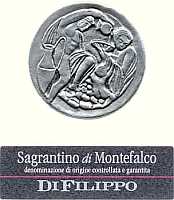
|
|
Sagrantino di Montefalco 2003 |
|
| Di Filippo (Umbria, Italy) | |
| Grapes: Sagrantino | |
| Price: € 20.90 | Score: |
| This Sagrantino di Montefalco shows an intense ruby red color and nuances of ruby red, little transparency. The nose denotes intense, clean, pleasing and refined aromas which start with hints of plum, blackberry and black cherry followed by aromas of violet, vanilla, tobacco, carob and mace. The mouth has good correspondence to the nose, a tannic attack and however balanced by alcohol, full body, intense flavors. The finish is persistent with flavors of black cherry, plum and blackberry. This Sagrantino di Montefalco ages for 12 months in cask. | |
| Food Match: Game, Roasted meat, Braised and stewed meat, Hard cheese | |

|
|
Poggio Madrigale 2001 |
|
| Di Filippo (Umbria, Italy) | |
| Grapes: Sangiovese, Merlot, Montepulciano | |
| Price: € 14.90 | Score: |
| Poggio Madrigale shows a brilliant ruby red color and nuances of garnet red, moderate transparency. The nose reveals intense, clean, pleasing and refined aromas which start with hints of plum jam, black cherry jam and dried violet followed by aromas of blueberry jam, vanilla, carob, tobacco, licorice and menthol. The mouth has good correspondence to the nose, a tannic attack and however balanced by alcohol, good body, intense flavors. The finish is persistent with flavors of plum jam and black cherry jam. Poggio Madrigale ages for 24 months in cask. | |
| Food Match: Roasted meat, Braised and stewed meat with mushrooms, Hard cheese | |
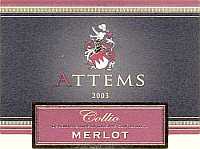
|
|
Collio Merlot 2003 |
|
| Attems (Friuli Venezia Giulia, Italy) | |
| Grapes: Merlot | |
| Price: € 9.00 | Score: |
| This Merlot shows an intense ruby red color and nuances of garnet red, moderate transparency. The nose denotes intense, clean, pleasing and refined aromas that start with hints of black cherry, plum and black currant followed by aromas of vanilla, tobacco, cinnamon, chocolate, pink pepper, licorice and menthol. The mouth has good correspondence to the nose, a slightly tannic attack and pleasing roundness, however balanced by alcohol, good body, intense flavors. The finish is persistent with flavors of black cherry, plum and black currant. Collio Merlot ages for 14 months in barrique, 2 months in steel tanks and 4 months in bottle. | |
| Food Match: Broiled meat and barbecue, Sauteed meat, Stewed meat | |
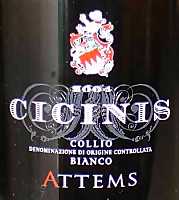
|
|
Collio Bianco Cicinis 2004 |
|
| Attems (Friuli Venezia Giulia, Italy) | |
| Grapes: Sauvignon Blanc, Tocai Friulano, Pinot Blanc | |
| Price: € 17.00 | Score: |
| Collio Bianco Cicinis shows an intense golden yellow color and nuances of golden yellow, very transparent. The nose reveals intense, clean, pleasing and refined aromas which start with hints of plum, honey and almond followed by aromas of vanilla, hawthorn, citrus fruit peel, apple, litchi, peach jam, pineapple and bergamot. The mouth has good correspondence to the nose, a crisp attack and pleasing roundness, however balanced by alcohol, good body, intense flavors, agreeable. The finish is persistent with flavors of plum, almond and pineapple. A well made wine. Collio Bianco Cicinis ages for 12 months in barrique followed by 2 months of aging in bottle. | |
| Food Match: Roasted white meat, Roasted fish, Stuffed pasta with cheese | |
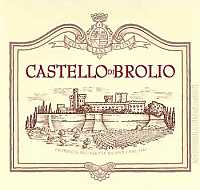
|
|
Chianti Classico Castello di Brolio 2001 |
|
| Barone Ricasoli (Tuscany, Italy) | |
| Grapes: Sangiovese (85%), Cabernet Sauvignon, Merlot (15%) | |
| Price: € 26.50 | Score: |
| Chianti Classico Castello di Brolio shows an intense ruby red color and nuances of garnet red, little transparency. The nose reveals intense, clean, pleasing, refined and elegant aromas which start with hints of black cherry, plum and black currant followed by aromas of violet, blueberry, vanilla, tobacco, licorice, cocoa, cinnamon, mace and eucalyptus. The mouth has good correspondence to the nose, a tannic attack and however balanced by alcohol, good body, intense flavors, agreeable. The finish is persistent with flavors of black cherry, black currant and plum. A well made wine. Chianti Classico Castello di Brolio ages for 18 months in barrique followed by 8 months of aging in bottle. | |
| Food Match: Roasted meat, Braised and stewed meat with mushrooms, Hard cheese | |
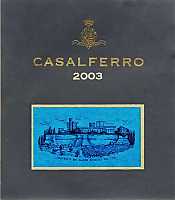
|
|
Casalferro 2003 |
|
| Barone Ricasoli (Tuscany, Italy) | |
| Grapes: Sangiovese, Merlot | |
| Price: € 25.00 | Score: |
| Casalferro shows a deep ruby red color and nuances of garnet red, little transparency. The nose reveals intense, clean, pleasing, refined and elegant aromas which start with hints of black cherry, plum and black currant followed by aromas of violet, blackberry, vanilla, toasted wood, tobacco, menthol, mace, licorice, chocolate, cinnamon and leather. The mouth has a very good correspondence to the nose, a tannic attack and however balanced by alcohol, full body, intense flavors, agreeable. The finish is very persistent with long flavors of black cherry, plum and black currant. A well made wine. Casalferro ages for 18 months in barrique. | |
| Food Match: Game, Roasted meat, Braised and stewed meat, Hard cheese | |
|
||||||||
|
DiWineTaste Polls
|
| |||||||
Privacy Policy | |||||||


| Copyright © 2002-2024 Antonello Biancalana, DiWineTaste - All rights reserved |
| All rights reserved under international copyright conventions. No part of this publication and of this WEB site may be
reproduced or utilized in any form or by any means, electronic or mechanical, without permission in writing from DiWineTaste. |